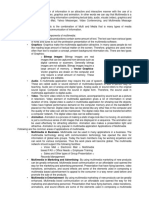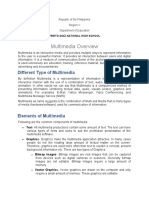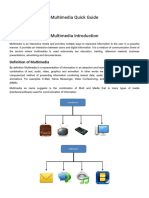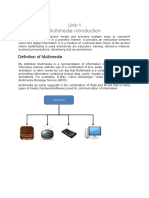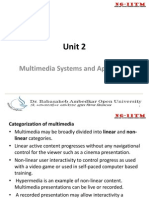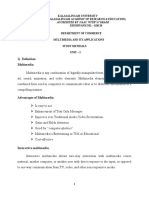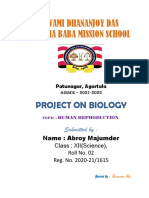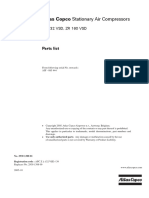0% found this document useful (0 votes)
4 views9 pagesMultimedia Systems (Unit1)
The document provides an overview of multimedia systems, defining multimedia as an interactive medium that combines text, audio, video, graphics, and animation for effective communication. It outlines the components of multimedia, such as text, graphics, audio, video, and animation, and discusses various applications in business, education, marketing, banking, and healthcare. Additionally, it covers technical aspects of audio, including file formats, digitization, and the advantages of MIDI in music production.
Uploaded by
sandippramanik1302Copyright
© © All Rights Reserved
We take content rights seriously. If you suspect this is your content, claim it here.
Available Formats
Download as PDF, TXT or read online on Scribd
0% found this document useful (0 votes)
4 views9 pagesMultimedia Systems (Unit1)
The document provides an overview of multimedia systems, defining multimedia as an interactive medium that combines text, audio, video, graphics, and animation for effective communication. It outlines the components of multimedia, such as text, graphics, audio, video, and animation, and discusses various applications in business, education, marketing, banking, and healthcare. Additionally, it covers technical aspects of audio, including file formats, digitization, and the advantages of MIDI in music production.
Uploaded by
sandippramanik1302Copyright
© © All Rights Reserved
We take content rights seriously. If you suspect this is your content, claim it here.
Available Formats
Download as PDF, TXT or read online on Scribd
/ 9

